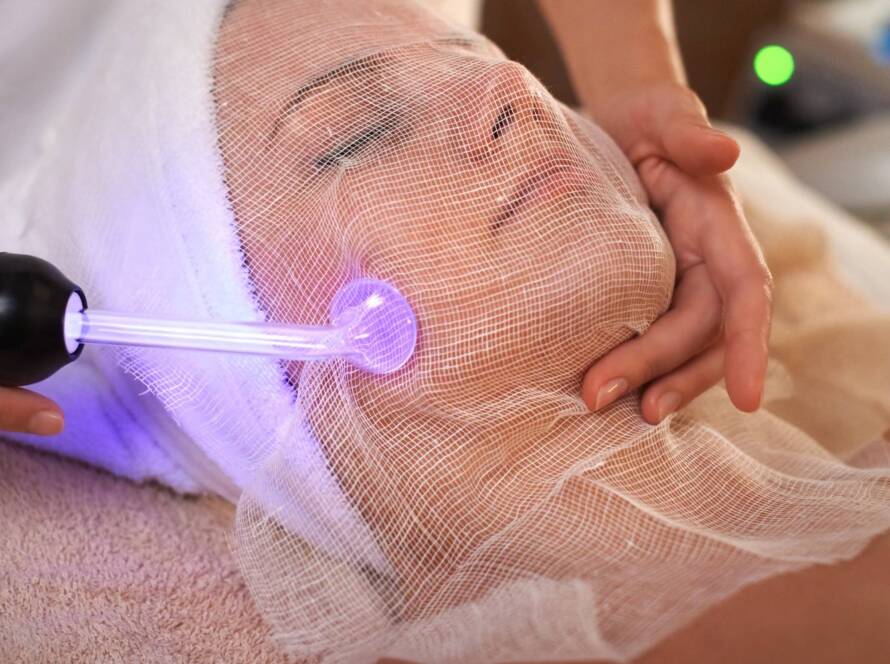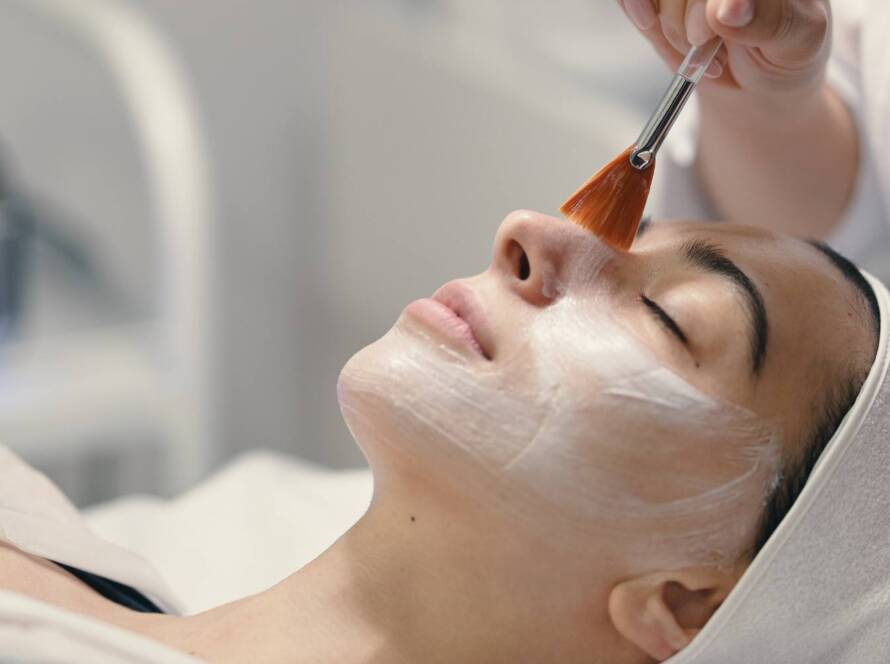Table of Contents
You’ve probably seen the buzz surrounding microneedling—from dermatology clinics to beauty influencers—and wondered, “Can you do microneedling at home?” The answer is yes, you can, as long as you take the right precautions and follow expert-recommended guidelines. When done properly, at-home microneedling can address fine lines, hyperpigmentation, acne scars, and uneven texture, all while boosting the absorption of your favorite skincare products. Yet, it’s essential to do it safely so you can reap the full benefits without risking your skin’s health.
In this post, you’ll explore the basics of at-home microneedling, including how it works, what tools you need, and how to reduce any potential drawbacks. By the time you’re finished reading, you’ll have the knowledge to make an informed decision on whether an at-home routine is right for you.
Understanding the Science Behind Microneedling
Microneedling is a minimally invasive procedure designed to promote skin rejuvenation. During each session, a tool embedded with tiny, sterile needles glides across your skin, creating microchannels. Your body perceives these micro-injuries as a signal to produce collagen and elastin—key proteins responsible for the skin’s firmness and elasticity. Essentially, you’re giving your skin a nudge to initiate its natural repair process. The result: a smoother, fresher, and more radiant complexion over time.
Why Collagen Production Matters
Collagen is your skin’s structural framework, providing fullness and elasticity. As you age, collagen production slows down, leading to fine lines and wrinkles. By gently triggering your skin to increase collagen production, you help minimize signs of aging and maintain a youthful glow. Think of microneedling as a workout for your complexion, prompting that extra boost of firmness your skin craves.
Essential Tools for At-Home Microneedling
Before you dive in, you’ll want to make sure you have the right device. While professional microneedling often uses mechanical pens with longer needles (typically 1.0 mm to 2.5 mm), at-home rollers or pens usually come with shorter needles, ranging from 0.2 mm to 0.5 mm. These are designed to be user-friendly and less invasive, making them ideal for personal use.
- Derma Roller: A handheld roller with tiny needles that you manually glide across your skin.
- Microneedling Pen: A pen-shaped device that uses motorized oscillation, often giving you a more controlled approach.
Both tools are effective, but pens can offer a smoother, more even experience. Whichever you choose, look for products from reputable brands with sterile, well-crafted needles—your skin deserves the safest tools possible.
Step-by-Step Guide: How to Perform Microneedling at Home
You don’t have to be a professional to gain the rewards of microneedling, but you do need to follow a careful process. Here’s a comprehensive walk-through:
- Cleanse Thoroughly
Start by washing your hands and then your face using a gentle cleanser. You want to remove makeup, dirt, and oil so you have a fresh canvas. - Sanitize Your Device
Use rubbing alcohol or the cleaning solution recommended by your device’s manufacturer. Ensure you let the device dry on a clean surface before use. - Prep Your Skin
Pat your face dry with a clean towel. If you’re particularly sensitive to discomfort, you might consider applying a topical numbing cream, but this step is often optional with the shorter needles used at home. - Roll or Glide in Sections
Divide your face into sections: forehead, cheeks, nose, chin, and neck. Gently roll or move your microneedling device horizontally, vertically, and diagonally across each area. Overlap carefully but avoid pressing too hard—let the needles do the work. - Apply a Hydrating Serum
Immediately after microneedling, apply a soothing, hydrating serum. Your skin will be more receptive to topical ingredients, so this step helps maximize your results. - Soothe and Protect
If your skin feels irritated, calm it with a fragrance-free moisturizer. Finish with a broad-spectrum sunscreen of at least SPF 30 if you’ll be exposed to sunlight. Your freshly treated skin is more delicate and needs extra protection. - Clean and Store Properly
Sanitize the roller or pen again before storing it in a clean, dry place. Proper care prolongs the life of your device and ensures safe, hygienic usage each time.
By following these steps, you take proactive measures to promote healthy skin regeneration. Regular sessions—once every one to two weeks—are often enough to see an improvement. However, always monitor how your skin responds and adjust your frequency accordingly.
Weighing the Benefits and Potential Drawbacks
Like any skincare treatment, at-home microneedling comes with its pros and cons. Understanding both helps you set realistic expectations and reduce the likelihood of complications.
Advantages of At-Home Microneedling
- Enhanced Product Absorption: The microchannels created by the needles allow serums and moisturizers to penetrate more deeply.
- Cost-Effective: Professional sessions can be expensive. Performing your own treatment at home cuts down on recurring costs.
- Convenience: You have the flexibility to fit microneedling into your skincare routine whenever it suits you, without scheduling appointments.
- Natural Approach: Stimulating collagen production from within can give you a refreshed look without injectables or chemical treatments.
Possible Risks and Side Effects
- Skin Irritation: You might notice redness, dryness, or a slight stinging sensation. These reactions typically subside within a day or two.
- Infection: Improper sanitization of your device or insufficient skin cleansing can introduce bacteria to the microchannels.
- Hyperpigmentation: In rare cases, aggressive use or overuse can lead to post-inflammatory hyperpigmentation.
- Extended Downtime: While at-home needles are shorter, you could still experience mild swelling or redness that requires a bit of recovery time.
If you have active acne, eczema, rosacea, or any open wounds, it’s best to consult with a dermatologist before attempting at-home microneedling. When in doubt, professional advice is always beneficial.
Comparing At-Home to Professional Treatments
The shorter needles used at home can be effective for mild textural improvements and for boosting skincare absorption. However, professional treatments often use longer needles to target deeper skin layers, potentially offering more dramatic outcomes. You’ll also get the expertise of a licensed professional who customizes each session to your unique concerns.
Still, your personal needs and budget play a huge role in deciding which route to take. If you have deeper acne scars or more severe issues, a professional series of treatments might provide the results you’re aiming for. On the other hand, if your concerns are relatively mild and you’re looking for a gradual, cost-effective improvement, at-home microneedling can fit the bill perfectly.
Safety Tips for a Successful At-Home Experience
- Patch Test First
Before rolling across your entire face, do a small patch test on your forearm to check for skin reactions or sensitivities. - Start with the Shortest Needle Length
If you’re new to microneedling, opt for 0.2 mm needles before moving to slightly longer ones. This helps your skin adjust slowly. - Avoid Harsh Skincare Products Post-Treatment
Skip products containing retinol, glycolic acid, or alcohol immediately after your session. These could exacerbate irritation. - Be Mindful of Frequency
Over-rolling can harm your skin and delay healing. Pay attention to how your skin responds and give it time to recuperate between sessions. - Store Your Device Safely
Keep it in a dedicated, clean case or container to avoid any contamination, dust, or damage to the needles.
Your top priority is to protect your skin’s barrier and prevent infection. If you notice excessive redness, swelling, or signs of infection like pus or unusual pain, pause your treatments and consult a healthcare professional.
Building a Complementary Skincare Routine
Microneedling isn’t a standalone fix; it’s most effective when combined with a well-rounded skincare regimen. Consider these key product types:
- Gentle Cleanser: Sets the stage by removing impurities and minimizing bacteria before treatment.
- Hydrating Serum: Locking in moisture immediately after microneedling supports skin repair.
- Fragrance-Free Moisturizer: Further calms the skin barrier and maintains hydration levels.
- Broad-Spectrum Sunscreen: Protects you from UV damage, which can worsen hyperpigmentation and slow your skin’s healing process.
If you decide to incorporate active ingredients like retinoids and acids, ease them in gradually. This cautious approach prevents overwhelming your freshly treated skin, minimizing the likelihood of irritation or dryness.
Your Path to At-Home Microneedling Success
Microneedling at home can be a game-changer for rejuvenating your complexion—if done carefully and consistently. You’re likely to see smoother skin texture and a subtle, healthy glow over time. Remember to prioritize cleanliness, track your skin’s response, and adjust your routine as needed. Whether you’re aiming to address mild acne scars or simply want your serums to work a little harder, at-home microneedling provides a convenient, cost-effective solution.
You deserve a skincare routine that empowers you. If at-home microneedling aligns with your comfort level and your skin’s needs, it can be an exciting addition to your self-care regimen. Remain attentive to any warning signs, treat your skin with kindness, and enjoy watching your complexion take on a refreshed, more radiant look.




